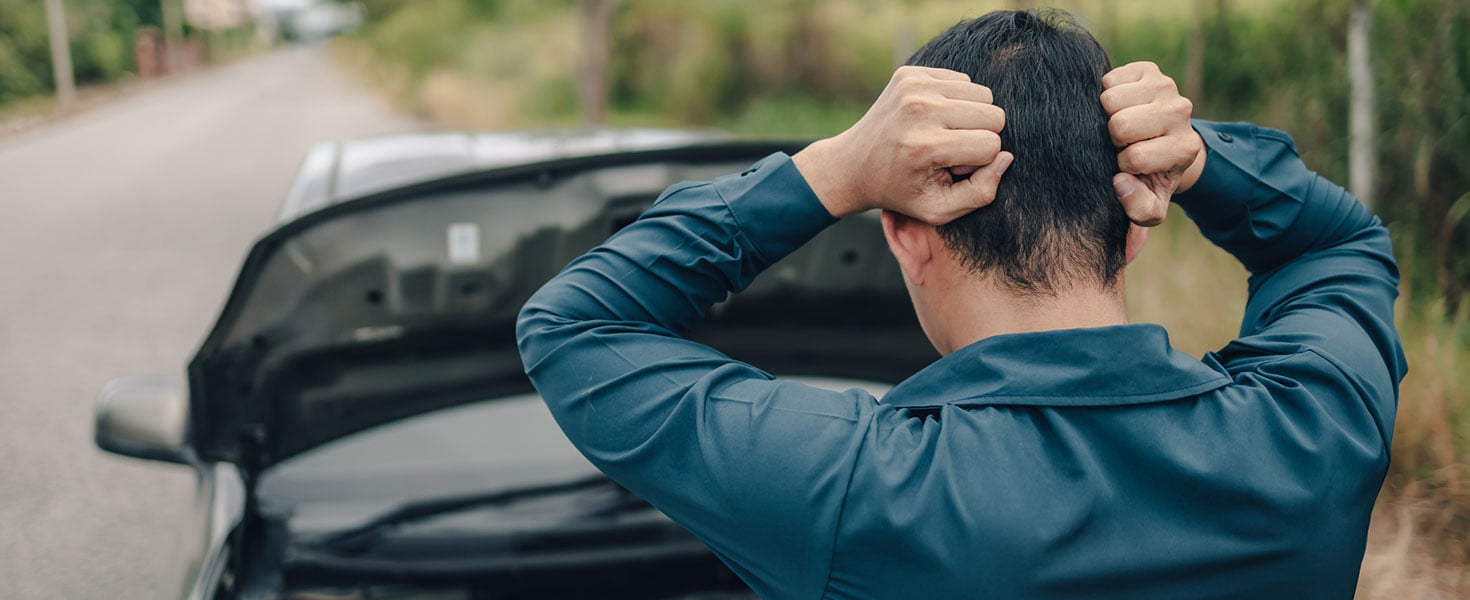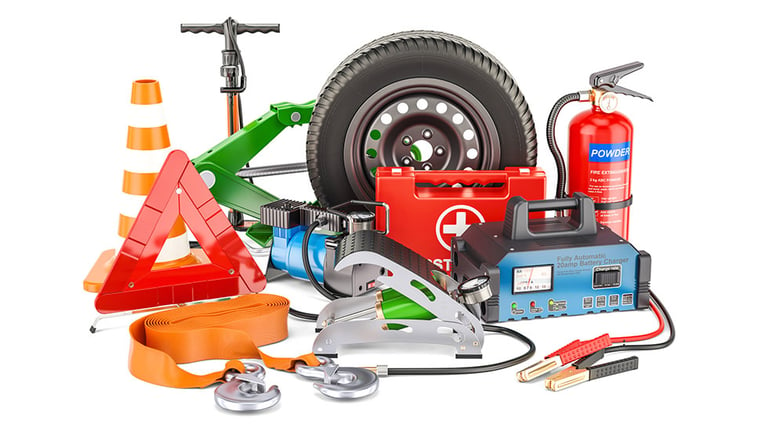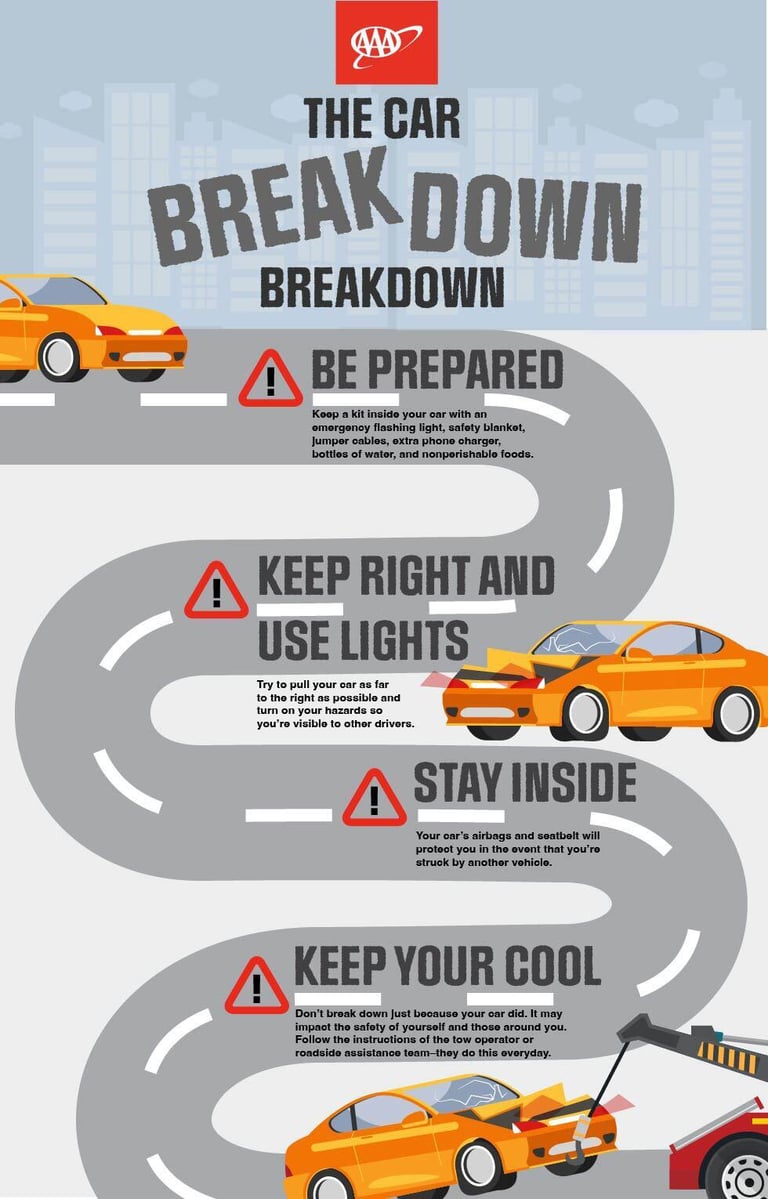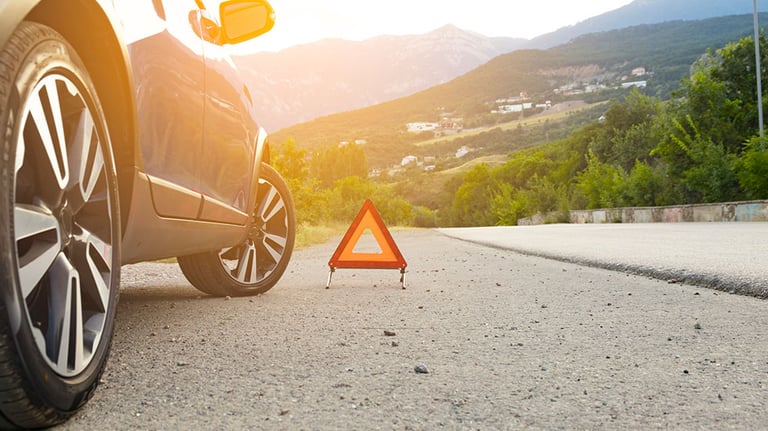The Key To Staying Safe When Your Car Breaks Down
Best practices and behaviors


Modern vehicles come equipped with spare tires, fix-a-flat kits, and jacks to help motorists in emergencies, so while most of us acknowledge that breakdowns can happen, how many of us are truly prepared for our vehicles to just quit working while we’re driving? Do you have a plan in case your car’s engine suddenly stops in the middle of a busy interstate? What about a popped tire on a two-lane road late at night? While these scenarios may be unlikely, it pays to give them some thought now, so that we know the right course of action when and if the time comes to act.
The Roadside Assistance team at AAA has been in the business of helping stranded motorists for over 110 years. And they’ve seen it all. We sat down with AAA's Manager of Club Fleet Operations, Chris Overpeck, to learn some best practices for drivers experiencing roadside emergencies. He provided plenty of insight on how we can all be better prepared, where to stay during a breakdown, and even some behaviors to avoid during roadside emergencies so that everyone remains safe and out of harm’s way until you’re ready to get back on the road again.

Pack a roadside emergency kit
Having an emergency kit in your vehicle is good common sense.
"Every driver should keep an emergency kit in their vehicle. It should include an emergency flashing light, flares, orange triangles, safety blanket, bottles of water, and jumper cables," says Overpeck.
For added protection, we also recommend including a spare phone charger, 10k+mAh external battery pack, and some non-perishable food like granola bars. Most drivers don’t think about spending hours stranded inside their vehicles until they’re already stranded, so an ounce of preparedness in this department could save you a lot of time, headaches, and discomfort.

Stay inside your vehicle if possible
In the event your vehicle becomes disabled on a highway or surface street, pull over as far to the right as you're able and turn on your hazard lights.
You should never leave your vehicle if you haven’t pulled over, particularly if there is traffic moving around it. While this situation can be a driver’s worst nightmare, trying to cross a road with moving cars from a stranded vehicle is extremely dangerous and should never be attempted. In the event you’re stranded in the middle of the road, in addition to your hazard lights, you can also try to hang a piece of cloth from your window, then roll the window up so that it hangs loosely outside. When it comes to being visible to other drivers, every little bit helps if you’re stuck in the middle of moving traffic.

Staying safe outside your vehicle
If the conditions of your situation make it impossible to stay in your vehicle (and you've safely pulled over to the right shoulder), exit the vehicle from the passenger side and wait beyond the protective guard rail, if one exists. A good rule of thumb is to remain at least 40 feet from your disabled vehicle. This is an ideal distance that will put you and any passengers away from the danger of flying debris should the disabled vehicle be struck.
Avoid these common mistakes
A roadside breakdown can be a stressful event for many drivers. The added stress can often result in thoughtless behavior that actually increases danger for themselves, oncoming traffic, and the safety workers there to help them.
"A common mistake we see is drivers placing the vehicle into neutral to try and help the tow operator. This is highly dangerous because the vehicle isn't secured and can move at any time, possibly running over the driver, tow operator, or rolling into traffic," cautions Overpeck. Drivers shouldn't get out of the vehicle when the tow operator approaches either, he says, "Drivers tend to not pay attention to traffic around them, creating an even more dangerous situation." When assistance arrives, you should remain in your vehicle with seatbelt fastened until the tow operator approaches to give you instructions.
Roadside events are rarely expected, particularly for drivers with newer model vehicles or those who repair and maintain their rides religiously. Keeping these few best practices in mind, should you find yourself experiencing a roadside emergency, will ensure you have a safe experience and are hitting the road again soon.
